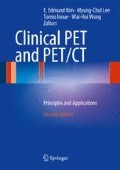Abstract
In 2003, breast cancer was the most frequently diagnosed cancer (212,600 new cases), and the second leading cause of cancer death (40,200 deaths) in American women (Jemal A, Thomas A, Murray T, et al. Cancer Statistics, 2002. CA Cancer J Clin 2002;52:23–47). In women ages 40–55 years, breast cancer is the leading cause of mortality (Jemal A, Thomas A, Murray T, et al. Cancer Statistics, 2002. CA Cancer J Clin 2002;52:23–47). There has been a slight decline in breast cancer mortality overall (Jemal A, Thomas A, Murray T, et al. Cancer Statistics, 2002. CA Cancer J Clin 2002;52:23–47) that can be attributed both to the success of early detection and to advanced treatment, particularly systemic therapy. Caucasian women in the US have a 13.1% lifetime incidence of developing breast cancer, whereas African-American women have a 9.6% lifetime incidence (Jemal A, Thomas A, Murray T, et al. Cancer Statistics, 2002. CA Cancer J Clin 2002;52:23–47). However, the lifetime risk of dying from breast cancer is 3.4% for both African-American and Caucasian women in the U.S. While the incidence of invasive breast cancer has leveled off, the number of ductal carcinomas in situ (DCIS) has been on the rise, probably a result of the increasing use of screening mammography.
Access this chapter
Tax calculation will be finalised at checkout
Purchases are for personal use only
References
Jemal A, Thomas A, Murray T, et al. Cancer statistics. CA Cancer J Clin. 2002;52:23–47.
Kopans DB. The positive predictive value of mammography. AJR Am J Roentgenol. 1992;1158:521–6.
Stavros AT, Thickman D, Sisney GA, et al. Solid breast nodules: use of sonography to distinguish between benign and malignant lesions. Radiology. 1995;196:123–33.
Amano S, Inoue T, Tomiyoshi K, et al. In vivo comparison of PET and SPECT radiopharmaceuticals in detecting breast cancer. J Nucl Med. 1998;39:1424–7.
Avril N, Menzel M, Dose J, et al. Glucose metabolism of breast cancer assessed by F-18 FDG PET: histologic and immunohistochemical tissue analysis. J Nucl Med. 2001;42:9–16.
Crippa F, Seregini E, Agresti R, et al. Association between F-18 flurodeoxyglucose uptake and postoperative histopathology, hormone receptor status, thymidine labelling index and p53 in primary breast cancer; a preliminary observation. Eur J Nucl Med. 1998;25:1429–34.
Paramagul CP, Helvic MA, Adler DD. Invasive lobular carcinoma: sonographic appearance and role of sonography in improving diagnostic sensitivity. Radiology. 1995;195:231–4.
Brown RS, Leung JY, Fisher SJ, et al. Intratumoral distribution of tritiated fluorodeoxyglucose in breast carcinoma. Are inflammatory cells important? J Nucl Med. 1995;36:1854–61.
Clavo AC, Wahl RL. Effects of hypoxia on the uptake of tritiated thymidine, L-leucine, L-methionine and FDG in cultured cancer cells. J Nucl Med. 1996;37:502–6.
Haberkorn U, Strauss LG, Reisser C, et al. Glucose uptake, perfusion, and cell proliferation in head and neck tumors: relation of positron emission tomography to flow cytometry. J Nucl Med. 1991;32:1548–55.
Burgman P, O’Donoghue JA, Humm JL, et al. Hypoxia-induced increase in FDG uptake in MCF7 cells. J Nucl Med. 2001;42:170–5.
Wahl RL, Helvie MA, Chang AE, et al. Detection of breast cancer in women after augmentation mammoplasty using F-18 fluorodeoxyglucose PET. J Nucl Med. 1994;35:872–5.
Flanagan FL, Dehdashti F, Siegel BA. PET in breast cancer. Semin Nucl Med. 1998;28:290–302.
Avril N, Dose J, Jäniicke F, et al. Assessment of axillary lymph node involvement in breast patients with positron emission tomography using radiolabeled 2-(fluorine-18)-fluoro-2-deoxy-D-glucose. J Natl Cancer Inst. 1996;88:1204–9.
Utech CI, Young CS, Winter PF. Prospective evaluation of F-18 FDG PET in breast cancer for staging of the axilla related to surgery and immunocytochemistry. Eur J Nucl Med. 1997;23:1588–93.
Hoh K, Hawkins RA, Glaspy JA, et al. Cancer detection with whole-body PET using F-18 FDG. J Comput Assist Tomogr. 1993;17:582–289.
Haberkorn U, Reinhardt M, Strauss LG, et al. Metabolic design of combination therapy: use of enhanced fluorodeoxyglucose uptake caused by chemotherapy. J Nucl Med. 1992;33:1981–7.
Minn H, Soini I. F-18 FDG scintigraphy in diagnosis and follow up of treatment in advanced breast cancer. Eur J Nucl Med. 1989;15:61–6.
Jansson T, Westlin JE, Ahlstrom H, et al. PET studies in patients with locally advanced and/or metastatic breast cancer: a method for early therapy evaluation? J Clin Oncol. 1995;13:1470–744.
Bassa P, Kim EE, Inoue T, et al. Evaluation of preoperative chemotherapy using PET with F-18 FDG in breast cancer. J Nucl Med. 1996;37:931–8.
Vranjesevic D, Filmont JE, Meta J, et al. Whole-body F-18 FDG PET and conventional imaging for predicting outcome in previously treated breast cancer patients. J Nucl Med. 2002;43:325–9.
Ravdin PM, Green S, Dorr TM, et al. Prognostic significance of progesterone receptor levels in estrogen receptor positive patients with metastatic breast cancer treated with tamoxifen: results of a prospective Southwest Oncology Group study. J Clin Oncol. 1992;10:1284–91.
McGuire AH, Dehdashti F, Siegel BA, et al. Positron tomographic assessment of estrogen receptors in breast assays. J Nucl Med. 1995;36:1766–74.
Dehdashti F, Mortimer JE, Siegel BA, et al. Positron tomographic assessment of estrogen receptors in breast cancer. Comparison with FDG PET and in vitro receptor assays. J Nucl Med. 1995;36:1766–74.
Butler JA, Trezona T, Vargas H, et al. Value of measuring hormone receptor levels of regional metastatic carcinoma of the breast. Arch Surg. 1989;124:1131–6.
Welch MJ, Bonasera TA, Sherman EIC, et al. F-18 FDG and 162-(F-18) fluoroestradiol-17B (FES) uptake in estrogen-receptor (ER)-rich tissues following tamoxifen treatment: a preclinical study. J Nucl Med. 1995;36:39–44.
Wahl RL, Cody R, Fisher S. Uptake before and after estrogen receptor stimulation: feasibility studies for functional receptor imaging. J Nucl Med. 1991;32:1011–5.
Dehdashti F, Flanagan FL, Siegel BA. PET assessment of metabolic flare in advanced breast cancer. Radiology. 1997;205:220–5.
Author information
Authors and Affiliations
Corresponding author
Editor information
Editors and Affiliations
Rights and permissions
Copyright information
© 2013 Springer Science+Business Media New York
About this chapter
Cite this chapter
Kim, E.E., Yukihiro, M. (2013). Breast Cancer. In: Kim, E., Lee, MC., Inoue, T., Wong, WH. (eds) Clinical PET and PET/CT. Springer, New York, NY. https://doi.org/10.1007/978-1-4419-0802-5_18
Download citation
DOI: https://doi.org/10.1007/978-1-4419-0802-5_18
Published:
Publisher Name: Springer, New York, NY
Print ISBN: 978-1-4419-0801-8
Online ISBN: 978-1-4419-0802-5
eBook Packages: MedicineMedicine (R0)

